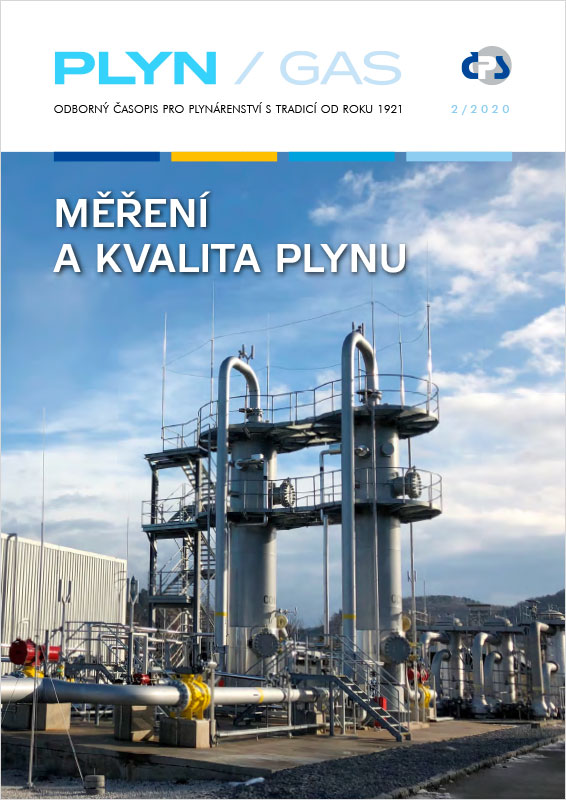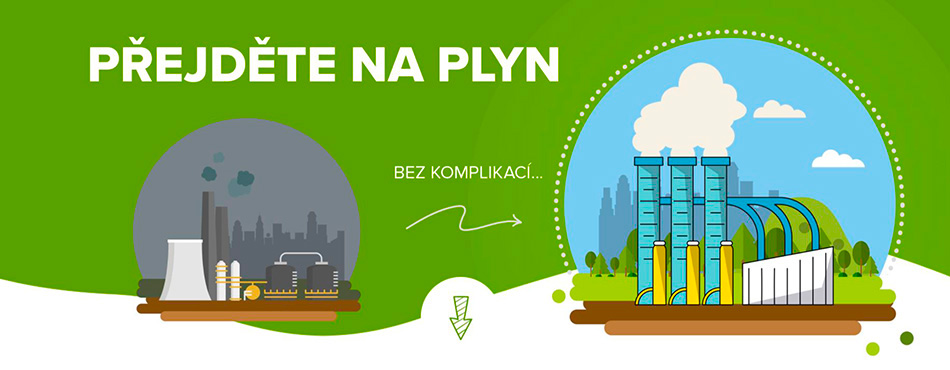2/2020
Gas Metering and Quality
INFORMATIVE ARTICLES
- Does an Economically Advantageous Use of Gas Smart Meters Exist?
- LNG Metering and Quality
- The 30th Anniversary of HUTIRA, the ‘Rebels’ in the Gas Industry
- Natural Gas Burning from the Perspective of Emissions
- With New Technology in the Field
- In Brief…
- Other Periodicals
- CNG Motoring – New Fuelling Stations
THE CGA‘S ACTIVITIES
- MARCOGAZ – Gas Metering from Europe’s Perspective
- From the ancient history of gas meters
- The Board Congratulates
TECHNICAL ARTICLES
Retrofit of the Gas Dehydration Unit at the Štramberk UGS Facility
Libor Čapla, Petr Goluch, Lukáš Kopal, Petr Zamrazil
Summary: The gas dehydration unit reached the end of its useful life, which was mainly felt in corrosion losses of the original drying columns’ material, and so replacement of the unit was initiated; the original three lines were replaced with two new lines. The horizontal drying columns were replaced by vertical columns with structured packing internals. New triethylene glycol regenerating units were selected against three criteria: energy efficiency, environmental parameters (CO and NOx emissions), and the acquisition cost. The results of testing indicate that the efficiency of water separation from withdrawn gas has the required values. Over two gas withdrawal seasons, the dehydration unit’s energy consumption was reduced to less than 20% of the original demand. Reduction in CO2 emissions by 457 t over the two seasons is related to that.
Key words: Underground gas storage facility, dehydration unit, triethylene glycol, reduction in emissions
Connecting Biomethane Plants to Czech Natural Gas Distribution Systems
František Humhal, Ilona Pasková
Summary: Connecting biomethane plants to gas installations is an issue that has been addressed in various European countries for some ten years. In addition to biomethane, other alternative gases (renewable energy carriers) are also appearing, for which access to gas installations, i.e. natural gas pipelines, is also being sought under the banner of decarbonisation and citing ‘the greening of gas’ as the reason. Thus, the point is to determine the conditions that will make the safe coexistence of different gases, i.e. mixtures thereof, in gas pipelines possible while meeting gas pipeline operators’ and renewable gas producers’ requirements and preventing disadvantage to the final customers (energy supply billing based on data from volume meters, i.e. gas meters).
Key words: Biomethane, renewable sources, natural gas pipelines
Rotary Gas Meters: History and the Present
Jaroslav Mikan
Summary: It has been exactly 100 years, when the system of Roots blower was used for gas measurement. Today rotary gas meters are the most widespread gas meters in the industry. In the past it was different, there was a period when rotary gas meters were being replaced by turbine gas meters. Rotary gas meters did not disappear thanks to CNC machiching and space research, which helped to create new materials. Developments from these fields were used in construction and production of rotary gas meters. This article is describing the history of development of Roots principle until now. In the final part are described special types of rotary gas meters, which document, that development will never end.
Key words: Principle of Roots blower, rotary gas meter, rotary pistons, load of gas meter, flow, accuracy class, error of gas meter
Effect of Heavy-duty Vehicles Riding over Buried Pipes on Stress in the Pipes
Ľubomír Gajdoš, Martin Šperl, Stanislav Hračov, Petr Crha
Summary: The contribution describes and discusses the results of theoretical and experimental research into the changes in the deformation and stress in the walls of a buried gas pipeline caused by heavy-duty vehicles riding over it, in particular as regards the use of casing on high-pressure gas pipelines. Over the entire circumference of a DN 500 pipe of L360NE steel, specifically in the 12, 3, 6 and 9 o’clock positions, relative deformations were strain gauged in the circumferential and longitudinal directions; the measurements covered a range from the condition of the pipe when buried in the excavation and backfilled until the riding of a vehicle over the pipe when empty and then when pressured up to 5.5 MPa and 5.2 MPa. The measured deformations served as input data for calculating the values of hoop and longitudinal stress over the circumference of the pipe, and the net effect of vehicle rides was determined from them. Considering the hoop stress in the 12 o’clock position, the stress caused by the vehicle riding over the empty pipe is less than –5 MPa based on the strain gauge measurements, and it is –9.4 MPa based on approximate calculations. This effect is even weaker for the pipe under pressure. The results show that the effect of external load caused by vehicles does not constitute any extreme risk in terms of overall stress in the pipeline.
Key words: Strain gauge measurements, pipe stress, vehicle riding





